Food poisoning is a common food-borne illness caused by contaminated food. Symptoms can be brutal and start at the worst possible time.
Foodborne diseases arise from food contamination by microbial pathogens, naturally occurring toxins, or other chemicals that have entered the food supply chain. Acute gastroenteritis and food poisoning caused by toxins are the most common forms of the disease, and its severity ranges from mild to severe and even leads to death. Estimating the burden of foodborne disease is difficult. Nevertheless, the analysis of the World Health Organization Estimated a total of 600 million episodes of foodborne illness worldwide, with 420,000 deaths in 2010. Prevention and control of foodborne illness remain a challenge for many people, and antimicrobial resistance among foodborne bacterial pathogens is a growing problem.
Fortunately, food poisoning is preventable. Continue reading this article, written by the Vira team, to learn about six types of food poisoning and how to prevent them.
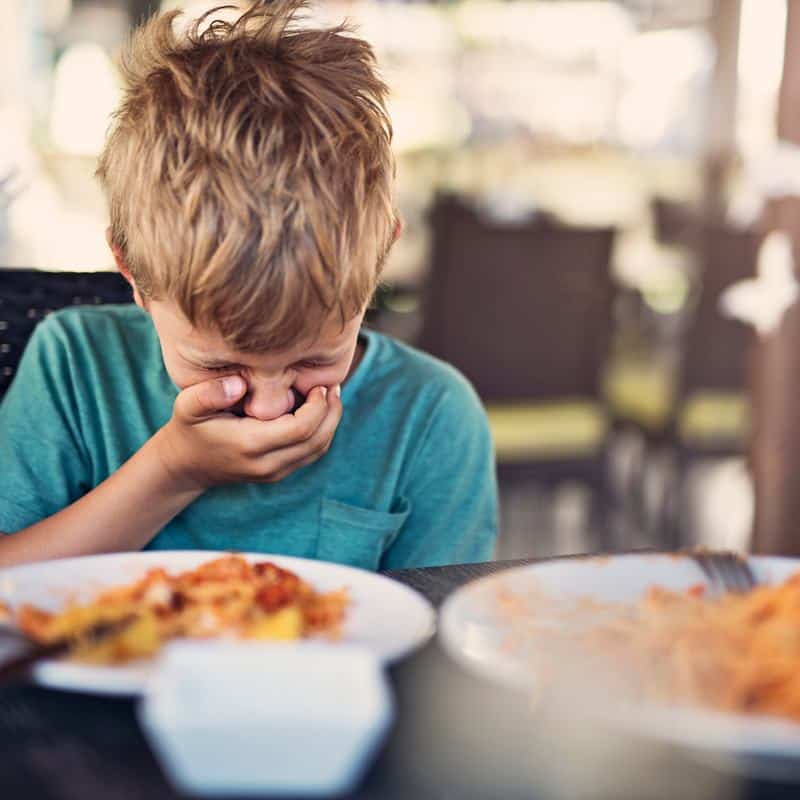
Signs and symptoms of food poisoning
Symptoms of food poisoning usually begin within one to two days of eating the contaminated food, although they may begin anywhere from a few hours to a few weeks later.
The main symptoms of food poisoning are:
- Feeling sick (nausea)
- Puke
- Diarrhea, which may contain blood or mucus
- Abdominal cramps and abdominal pain
- Lack of energy and weakness
- Loss of appetite
- Sore muscles
- chills
In most cases, these symptoms will disappear within a few days, and you will fully recover.
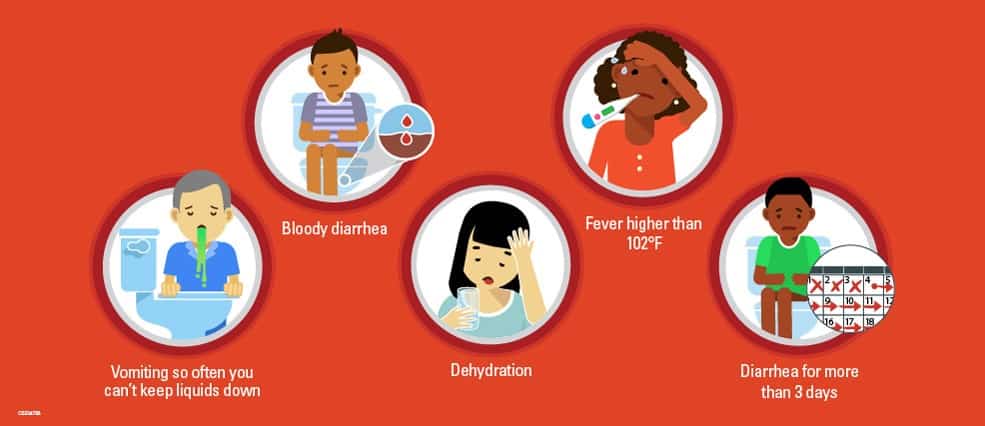
What to do after food poisoning?
Most people with food poisoning recover at home and do not need any special treatment, although there are situations where you should see your GP for advice.
You should rest and drink fluids until you feel better to prevent dehydration. Try to drink a lot of water.
Eat when you feel like it, but try small, light meals at first and bland foods like toast, crackers, bananas, and rice until you feel better.
Oral rehydration solutions (ORS) from pharmacies are recommended for more vulnerable people, such as the elderly and those with other health conditions.
Types of food poisoning
There are more than 250 types of foodborne illnesses. Some of the most common types of food poisoning include:
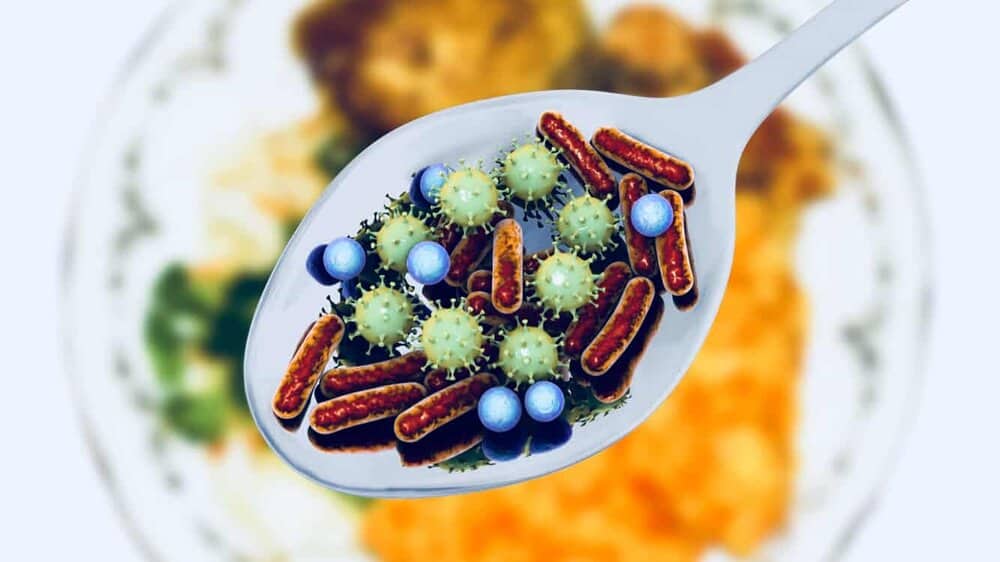
Norovirus
Norovirus is one of the most common causes of foodborne illness. Norovirus is a highly contagious virus caused by interacting with an infected person. Norovirus is also caused by consuming contaminated water or food or touching the face after touching the contaminated surface. Norovirus is more common in places with close quarters or a shared water source, such as cruise ships or dormitories.
Symptoms of norovirus begin within 12 to 48 hours and usually last one to three days. The most common symptoms of norovirus are diarrhea, vomiting, nausea, and stomach pain.
Rotavirus
Rotavirus is a highly contagious virus that causes vomiting, fever, diarrhea, stomach pain, inflammation, and other intestinal symptoms. Rotavirus is common in infants and younger children. Rotavirus symptoms usually begin two days after exposure to the virus and last three to eight days. Some medications can relieve symptoms, but antibiotics and antiviral drugs are ineffective against rotavirus.
Vaccinate your children against rotavirus to prevent severe illness. Unvaccinated children in daycare programs are at greater risk of rotavirus infection. Schedule your rotavirus and other childhood vaccines today.
Salmonella poisoning
Salmonella poisoning is a common type of food poisoning associated with undercooked chicken and raw eggs. Salmonella is more common in summer than winter because the harmful bacteria that cause food poisoning survive better in warm weather. Symptoms of salmonella poisoning begin six hours to six days after exposure. Symptoms include diarrhea, fever, stomach cramps, and vomiting. Salmonella usually lasts four to seven days.
You may be at increased risk of salmonella poisoning if you take antacids, have inflammatory bowel disease, or have pets. Another risk factor for salmonella is the long-term use of antibiotics. Antibiotics make it harder to get rid of salmonella because they kill the “good” bacteria in your stomach and intestines.
Certain types of salmonella, such as traveler’s diarrhea, are more common during international travel. See a doctor if you have symptoms of salmonella after returning home.
Clostridium perfringens
Clostridium perfringens in meat and poultry often cause food poisoning when the food is refrigerated for long periods. Symptoms of Clostridium perfringens include diarrhea and stomach cramps and last less than 24 hours.
Listeriosis
Foodborne illness is caused by a bacterium called Listeria. Listeria can survive in refrigerator temperatures and hide in dairy products. Listeriosis primarily affects pregnant women, infants, people 65 years and older, and those with weakened immune systems.
Listeria symptoms begin one to four weeks after exposure and last one to three days. Pregnant women usually experience flu-like symptoms. Older adults suffer from headaches, stiff necks, confusion, fever, and muscle pain. Your doctor may recommend antibiotics to treat listeriosis.
E. coli
There is usually some E. coli in the gut. Fortunately, you only have to worry about pressures outside of your body. This type of food poisoning occurs when you eat or drink food or water contaminated with E. coli. Other causes of E. coli include: Undercooked meat, unsanitary transportation of food, person-to-person contact, and sitting hands after touching the animal. E. coli is also responsible for most urinary tract infections and occasionally causes blood in the urine.
Symptoms begin three to four days after exposure and usually last 5 to 10 days. Symptoms of E. coli include severe stomach cramps, diarrhea, and vomiting.
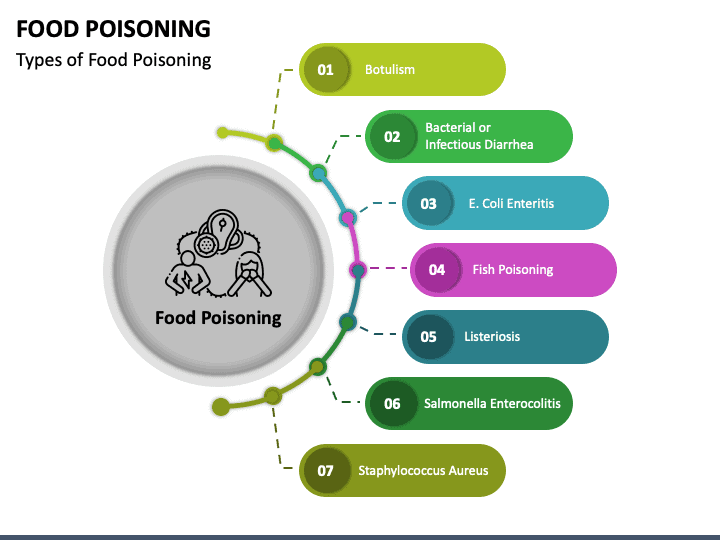
Cross-contamination
Cross-contamination occurs when harmful bacteria are transferred from one surface to another. Avoidance is your best defense against cross-contamination. Wash your hands and disinfect frequently touched surfaces such as doorknobs.
Warmer weather
Bacteria thrive in the summer months because bacteria grow faster in warm weather. Reduce your chances of food poisoning when the sun goes down by keeping food at 4°C or below.
How to prevent food poisoning?
Food poisoning is common and very preventable. You can prevent food poisoning in four easy steps – clean, separate, cook and refrigerate.
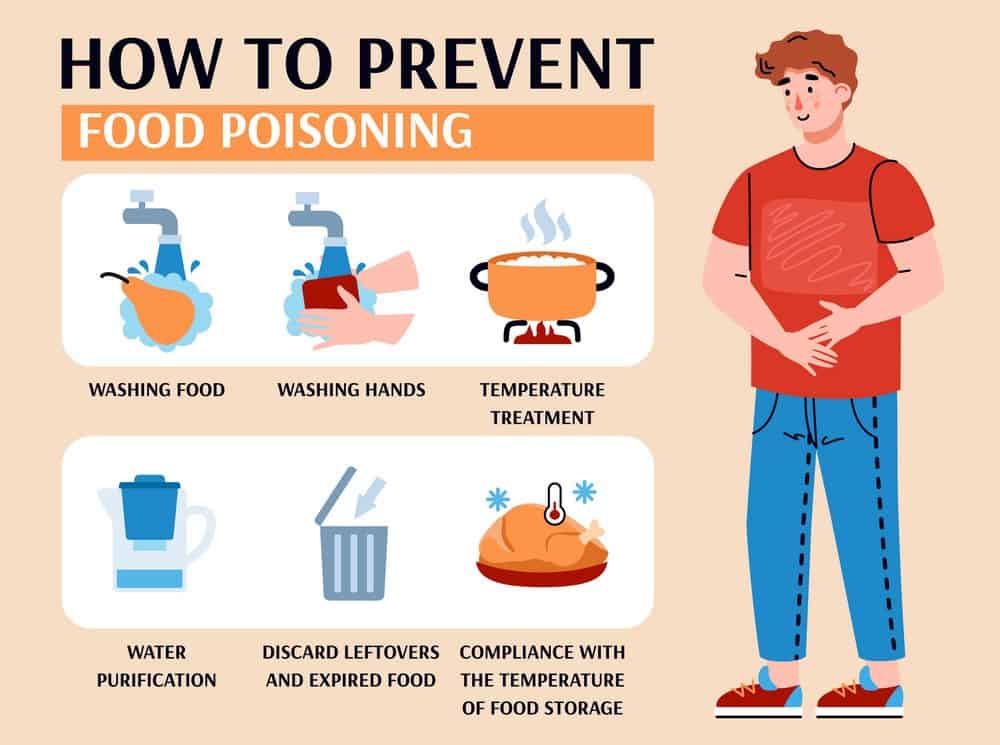
Clean often and maintain cleanliness
Harmful germs not visible to the naked eye can spread from your hands to counters and land on your food.
Wash your hands, utensils, and surfaces thoroughly before, during, and after food preparation and before eating. If soap and water are unavailable, use hand sanitizer as an alternative to hand washing. Soap and water can kill most germs on your hands, while hand sanitizer only kills some.
Use clean cookware, plates, serving platters, and cutting boards that have touched raw meat, poultry, seafood, eggs, or flour.
Wash fruits and vegetables, but don’t wash meat, seafood, poultry, or eggs to avoid contracting or spreading harmful germs.
The Ministry of World Health says that you should also wash your hands to prevent illness and food poisoning:
- Before and after handling raw meat, uncooked eggs, poultry, or seafood
- before eating
- After using the bathroom
- Before and after caring for someone who is sick
- After touching the animal
- After touching the garbage
- After changing diapers
- After blowing your nose, coughing, or sneezing.
Separate foods from each other
Separate your raw meat, eggs, seafood, and juices from other items, such as ready meals and groceries, in the refrigerator until they are fully cooked and ready to eat.
Store raw meats in closed containers and separate them from other foods on the lower shelves of the refrigerator to prevent juices from leaking onto other foods.
If you bring food to a picnic, barbecue, or any outdoor event, pack the meat in individual containers at the bottom and keep everything cool at 4°C or below until ready to serve or eat.
When serving food, always use clean plates and do not let raw and cooked food touch the same dish.
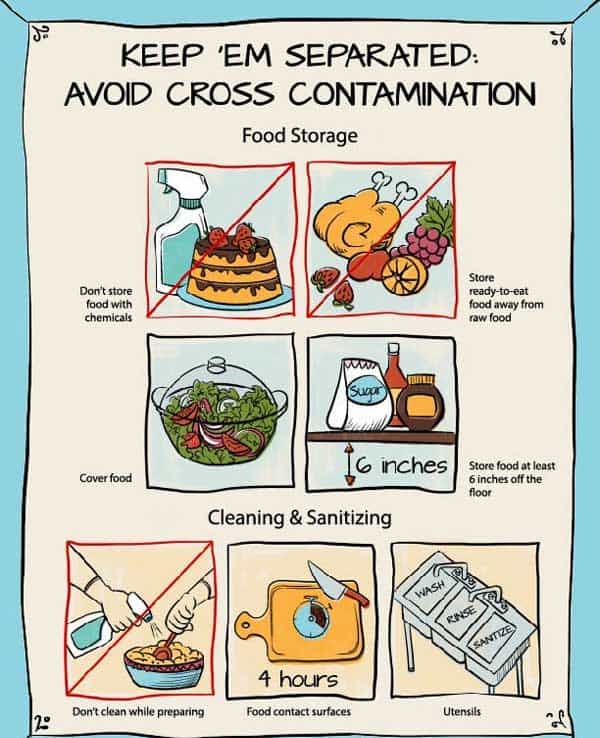
Cook
Some foods should be kept warm because heat kills germs. Do not rely on the appearance or smell of food to determine “healthiness.” Use a food thermometer to ensure your food is at a safe internal temperature to prevent overcooking.
| Food | Safe internal temperature |
| Whole cuts of beef, veal, lamb, and pork, including ham cooked from raw | 65 degrees Celsius |
| fish with fins | 65 degrees Celsius |
| Ground meat, such as beef, pork and lamb | 70 degrees Celsius |
| Whole poultry, whether whole or ground | 75 degrees Celsius |
| Leftovers, casseroles and any type of microwaveable food | 75 degrees Celsius |
| Egg | Cook until the yolk and white harden. |
| Egg dishes | 70 degrees Celsius |
Food storage temperature
Leaving food out at room temperature or warmer is one of the leading causes of foodborne illness. Refrigerate your food immediately after cooking or buying it from the store. Throw away any food left at room temperature for more than two hours. Eating for over two hours can put you in the danger zone of food poisoning.
During the warmer months, when bacteria can multiply faster and increase your chances of food poisoning, store and refrigerate food within an hour. Like a solar panel, bacteria use the sun for energy, but less valuable. You are less likely to get food poisoning when leftovers are stored in an airtight container and eaten within three to four days.
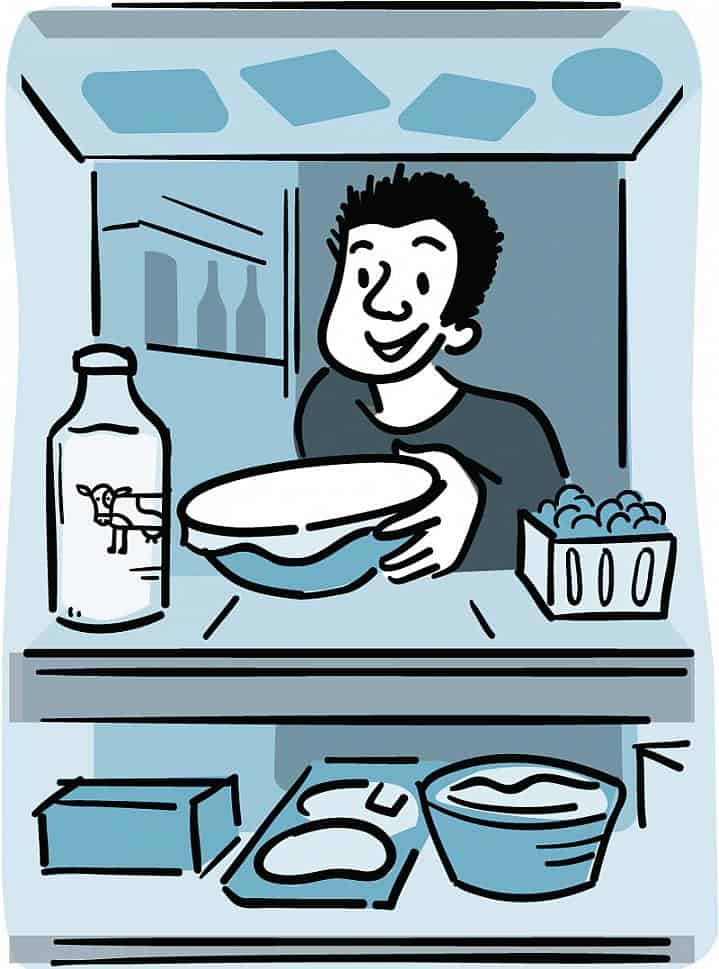
The role of smart packaging to prevent food poisoning
Smart packaging can prevent food poisoning by eliminating food poisoning agents such as E. coli, salmonella, and listeria, keeping meat, fish, fruits, and vegetable fresher for longer. According to a study, waterproof packaging may also help save the planet by reducing waste.
Smart packaging is about smart ways to package a product, providing fast, cheap, and efficient ways to monitor the environmental conditions of food in the supply chain. Intelligent, active packaging refers to systems used for food, pharmaceuticals, and other products.

